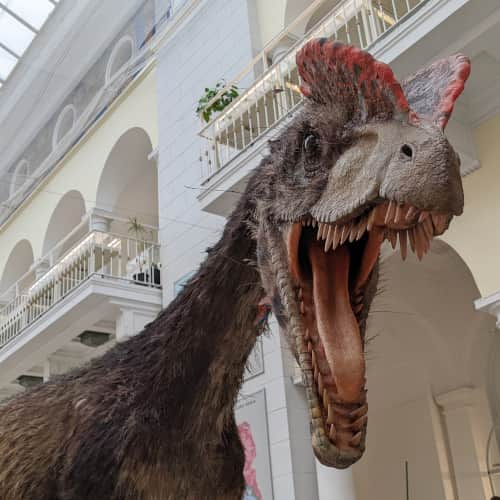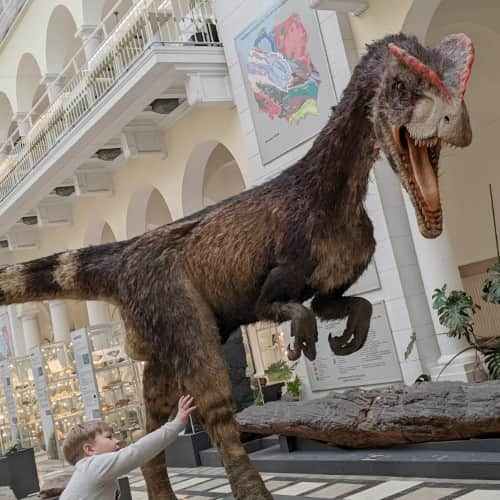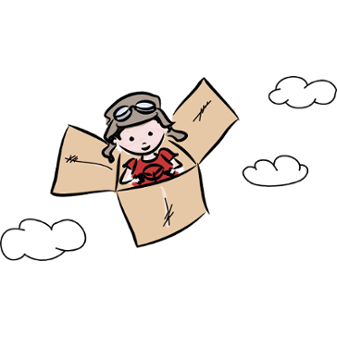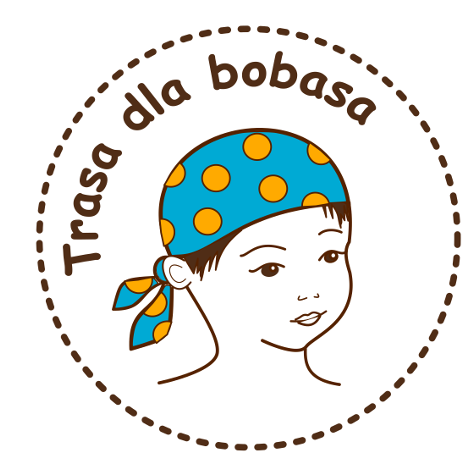Exploring Warsaw with kids - getting to know the sights and history
Town: Warszawa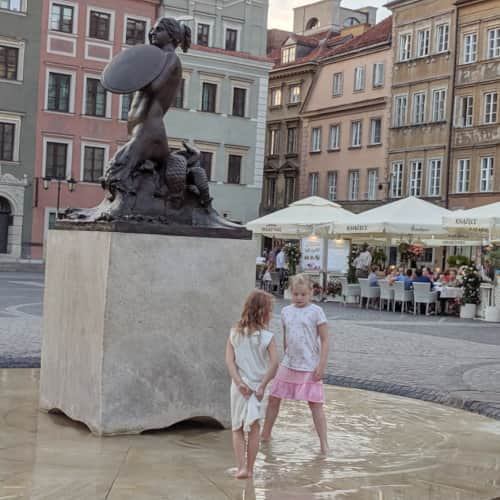
restaurant Restaurant or bar nearby
shopping_cart Store nearby
sports_basketball Playground along the route
directions_bus Access by public transport
accessible_forward The route is adapted to the needs of disabled people
wc Toilet along the route
baby_changing_station Baby changing facilities along the route
wc Toilet for the disabled along the route
Maybe you're just passing through Warsaw, or you only have one afternoon or a few hours and you want to show your child "something" - but what?
Exploring Warsaw from the Central Station
We start the route at the Palace of Culture and Science (right next to the Central Station), pass through the Old Town, and end at the Vistula beach. The route from the Central Station to the Royal Castle is about a 3-kilometer walk, if we have a bit more time we can go to the Vistula River, or even to the beach! Our walk is a "step back in time" - from glass skyscrapers, through the Presidential Palace, the Royal Castle and the Old Town Market Square, we will reach "where it all began", that is, the Vistula River.
Palace of Culture and Science and Warsaw skyscrapers
This is the contemporary history of Warsaw. It shows us how the city is developing. The skyscrapers, also known as cloud scrapers, are about 30 of the tallest buildings - they are the tallest structures in Poland, but it's worth knowing that Warsaw is also one of the tallest cities in Europe after Moscow, Frankfurt am Main, and London.

Saxon Garden and Tomb of the Unknown Soldier
Admiring the panorama of high-rise buildings, we head towards the Saxon Garden. This is a pleasant, extensive park with shaded avenues and a playground. There's a fountain here and an exit to Saxon Square with the Tomb of the Unknown Soldier - a place commemorating soldiers who died defending the country. An eternal flame burns at the tomb and an honor guard is on duty. It's worth noting that the buildings above the Tomb of the Unknown Soldier are the surviving fragment of the Saxon Palace, which was destroyed during the war. According to some theories, this fragment survived because a German soldier participating in the demolition operation did not put dynamite into the previously prepared holes in this part of the building out of respect for the anonymous Polish soldier resting in the tomb.

Presidential Palace
The real President of Poland lives in the Presidential Palace – look closely, maybe he will wave at you from the window?
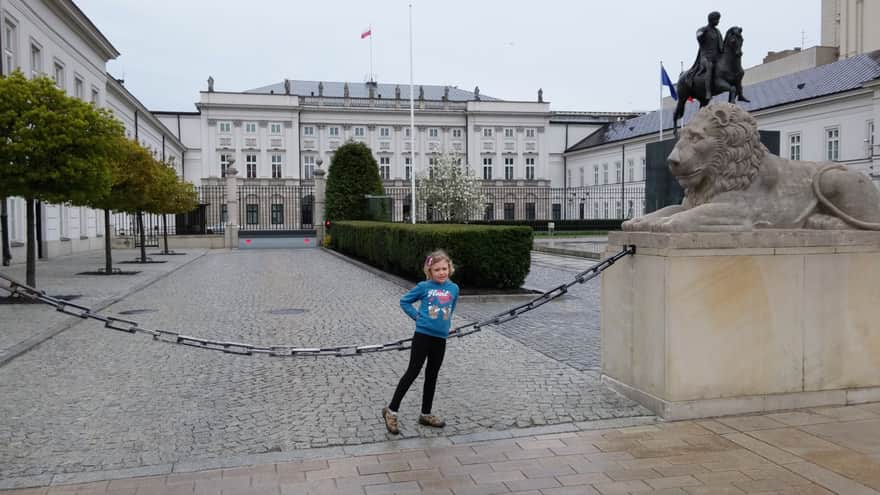
Royal Castle in Warsaw
Before the president came to power, the country was ruled by kings, who lived in the Royal Castle. Here we can see their chambers, or the lavish rooms in which they lived. Probably the decision of the king to move the residence from Krakow to Warsaw (because Krakow was previously the capital of Poland and the seat of kings) was influenced by the fire at the Wawel Castle. From that moment on, Warsaw became the most important city of the Republic.
Column of King Sigismund III Vasa
It was King Sigismund III Vasa who decided to move the royal residence from Krakow to Warsaw, making Warsaw the capital of the country. The move took many years. The court and its belongings were transported by barges on the Vistula River. At that time, no one treated this as a change of the "capital", the term "capital" did not even exist then. The rulers often moved around the country, traveled, and returned. Neither the king, nor his court, nor his subjects, no one expected that no Polish ruler would ever live permanently in Wawel again.
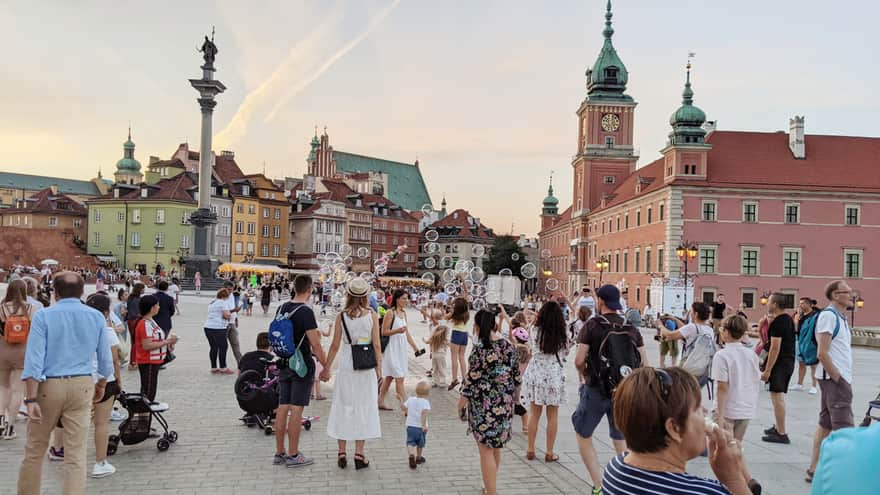
Defensive walls and Barbican
The Barbican and the city walls defended Warsaw from invaders. Additionally, there was a moat filled with water in front of the wall. Look for the shooting holes from which the inhabitants could shoot at the attackers.
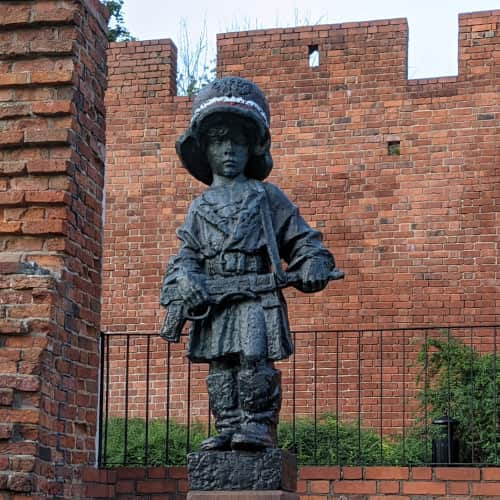
Easy
Defensive Walls Warsaw - a walk along the city walls
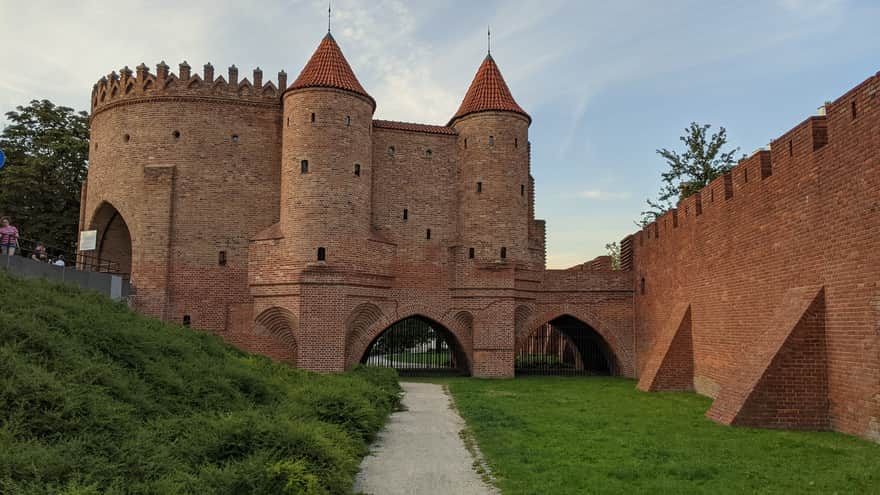
Monument of Wars and Sawa
At the end of the defensive walls we can see the monument of Wars and Sawa - an ancient legend says that it was the fisherman Wars and his wife Sawa who put up a small hut by the Vistula River around which a fishing settlement grew, which was named Warsaw after their names. If you still have a moment, it's worth going to the boulevards on the Vistula River, and even... take a ferry to the nearby beach on the other side!

Legend of the Warsaw Mermaid
Once upon a time, there was a fishing village on the banks of the Vistula River, and mermaids lived in the depths of the river. Often, the fishermen returning from their catch ...
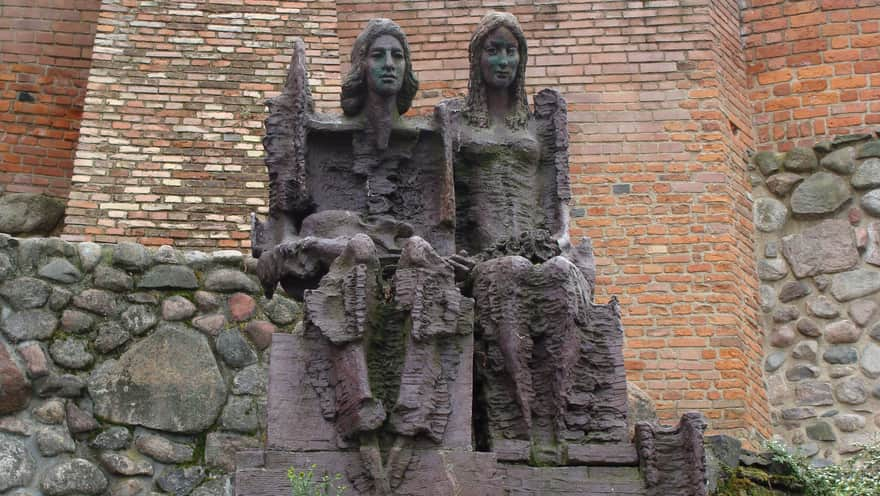
Old Town Market Square and Mermaid Statue
The Warsaw mermaid - half woman, half fish is the symbol of the city of Warsaw. The mermaid has been on the coat of arms of Warsaw since 1390 - she did not always have a female figure, and there was even a time when she had membranous wings and a tail! The image of the mermaid has simply changed over the centuries - at the beginning it was a more demonized, monstrous figure, but always holding a sword and shield. The legend of the Warsaw mermaid.
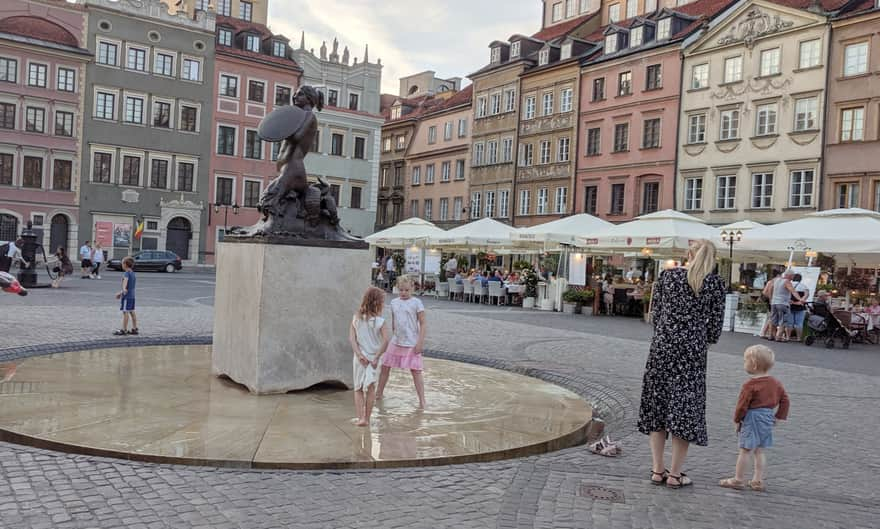
Beaches in Warsaw
The Vistula River actually had a special character for Warsaw - it connected the city with the north and the south. When land roads were difficult to travel, it was the Vistula River that was used to transport goods, barges carrying wood floated here. For centuries, the queen of Polish rivers was the main communication artery of Poland. Not many people associate Warsaw with beaching - but yes! There are many beaches on the Vistula boulevards and it's quite close to the Old Town! We will reach one by ferry, whose stop is located on the Boulevards in the Old Town - this is the Praga City Beach, to the other from the Old Town we are separated by a 30-minute walk along the Vistula boulevards - this is Żoliborz Beach.

Praga City Beach - Warsaw
The closest beach to the Old Town! It is located across the Vistula River from the Old Town. A seasonal ferry operates to ...
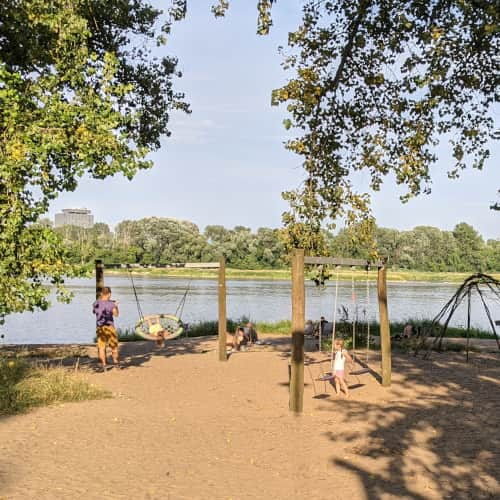
Żoliborz Beach
The Beach in Żoliborz, Warsaw is a fascinating, well-maintained, small city beach - one of the closest ones to the city center ...
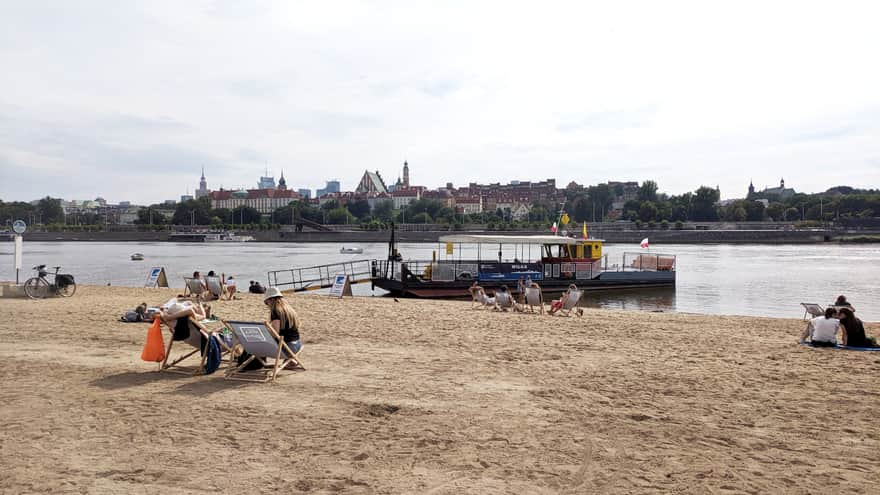
Coloring pages - Warsaw legends
Who among us doesn't like fairy tales and stories? Get to know the most famous Warsaw legends with us - you can print them out and color them!

Kolorowanki dla dzieci - warszawskie legendy
Kolorowanki warszawskie legendy dla dzieciPoznaj warszawskie legendy i pokoloruj je razem z nami! Poniżej seria kolorowa ...
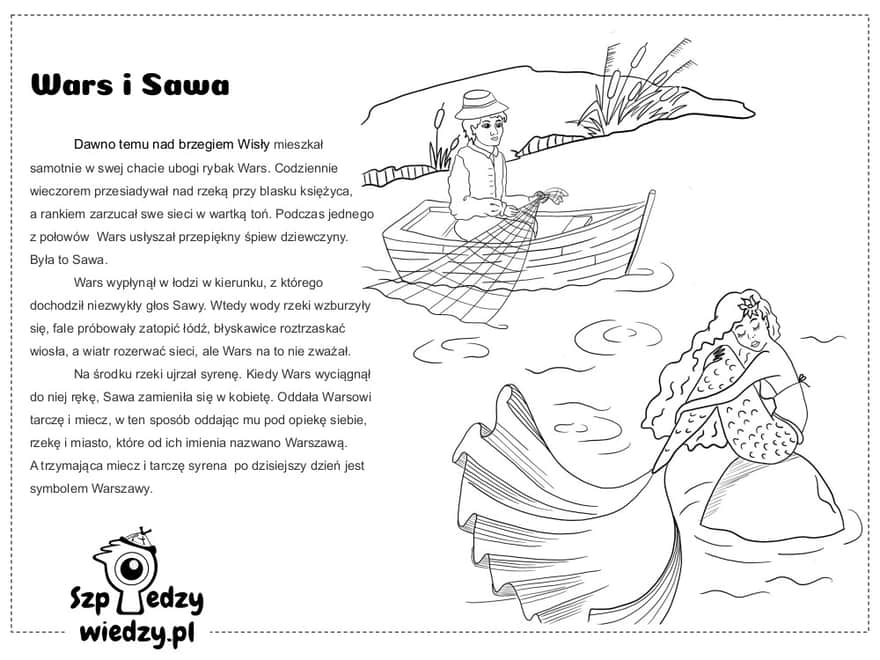
Publish Date: 2021-08-03
More in the Region Warszawa (Warsaw)

Total Length 7 km

